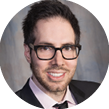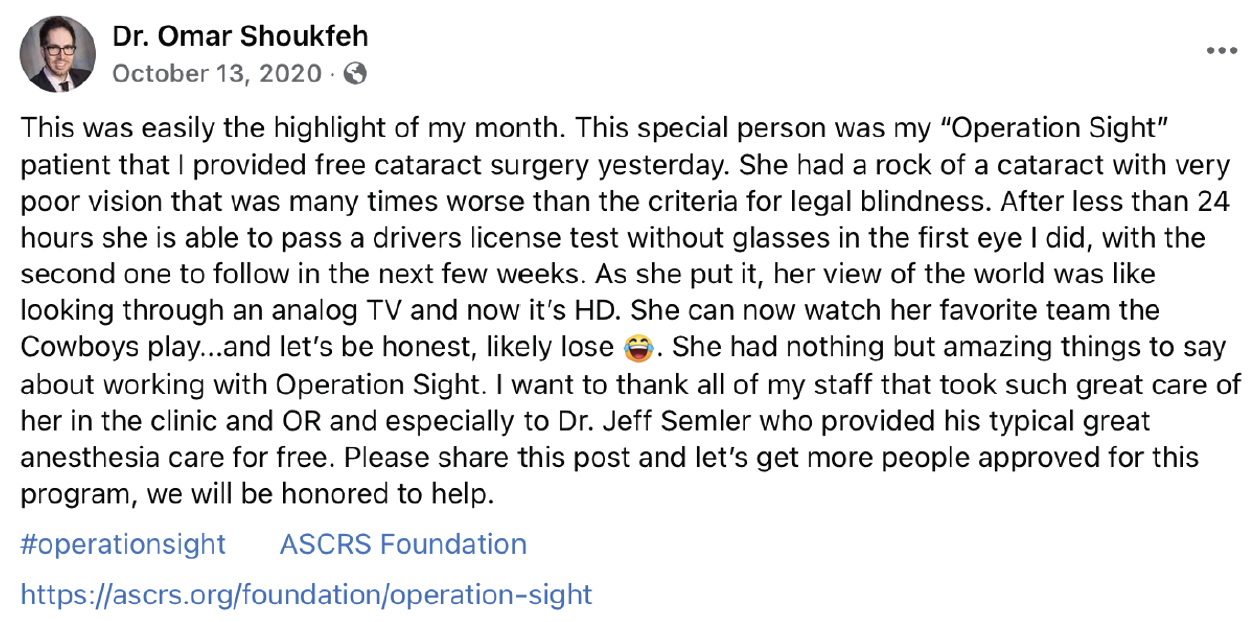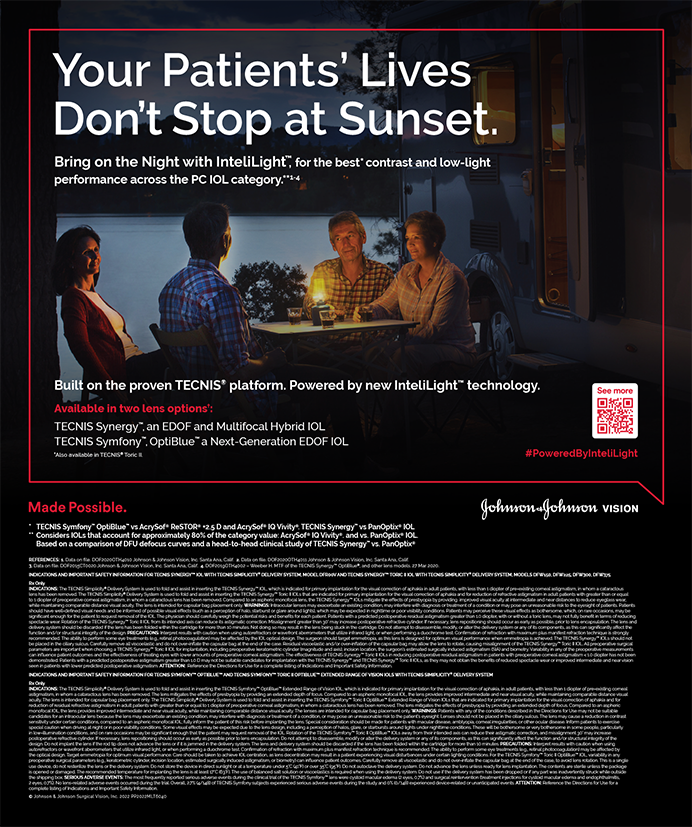
As a second-generation American, I have long been aware that health care is not readily available to people everywhere in the world. For that reason, I began participating in humanitarian outreach abroad as soon as I could in the hopes of helping to greatly improve the quality of life of more patients by restoring their vision. My understanding of who was underserved and deserved free health care, however, was limited to what I knew at the time. I believed that people without access to ophthalmologic care lived far beyond the borders of my home country. I traveled to Ghana and Jordan, and I am grateful for the experience. The trips left me feeling invigorated and yearning to make humanitarian outreach a regular part of my career. Thanks to my mentor, Zuhair Shihab, MD, I now know I can do so in my own backyard.
LOOKING CLOSER TO HOME
When I was discussing my outreach trips with Dr. Shihab, he commented that, although it is noble for physicians to leave their comfortable homes and communities to perform surgery abroad for people in need, he sees an inconsistency when the same physicians turn away local patients who are unable to afford ophthalmologic services. I was struck by his remarks.
I began searching out local compassionate use programs and knew I had found something special when I came across the ASCRS Foundation’s Operation Sight program. To be eligible, people must be uninsured or underinsured without coverage for cataract surgery and have an income that is at least 200% below the federal poverty level. I signed up as a volunteer surgeon and learned that there was a high need for volunteer surgeons in Texas, where I practice.
Operation Sight screens patients for eligibility and matches them with a volunteer surgeon. Volunteers receive all relevant information on their patients, including their responses to a questionnaire on how cataracts are affecting their functionality. Often, patients comment that they feel trapped when they cannot find a doctor’s office that allows them to pay for cataract surgery in installments. Patients also share that they experience constant headaches, falls, and depression.
MY FIRST CASE
I was contacted by the Operation Sight program manager about a patient living about 2 hours from my practice who met the eligibility criteria. The patient was in her 50s. She had a history of hypertension and diabetes but no significant ocular history. She had a manifest refraction of -5.25 + 2.50 x 96º OD and -4.25 +1.00 x 120º OS. Her BCVA was count fingers at 3 feet OD and count fingers at 8 feet OS. An ocular examination of each eye revealed a brunescent cataract, and moderate astigmatism was noted on topography.
The patient was scheduled for cataract surgery. The agreement was that all testing, surgery, and postoperative visits for 90 days would be free of charge for the patient. I have found no issues obtaining the necessary surgical supplies and IOLs from industry partners, if needed.
Cataract surgery on each eye was uneventful, and the procedures were performed 2 weeks apart. The patient received a monofocal IOL in each eye. One day after surgery, her UCVA was 20/40 OD and 20/20 OS. Her final UCVA was 20/25 OD and 20/20-1 OS.
The patient was delighted (Figure). After surgery, she told me, “Before surgery, my view of the world was like looking at an analog TV. Now, it’s in HD, and it’s beautiful.”

Figure. Dr. Shoukfeh with his first Operation Sight patient.
Everyone on my team helped to take the best possible care of the patient, and I found their enthusiasm inspiring.
CONCLUSION
It is easy to focus on the latest technology and meeting the rising expectations of patients, but I believe it is important for ophthalmologists not to lose sight of the reason they became doctors: to help the most vulnerable and those in greatest need. In my view, charity is a duty of those who are in positions to help (see A Ripple Effect). I also value the perspective voiced by the Uruguayan journalist Eduardo Galeano: “I don’t believe in charity. I believe in solidarity. Charity is so vertical. It goes from the top to the bottom. Solidarity is horizontal. It respects the other person. I have a lot to learn from other people.”
A Ripple Effect
The patient’s outcome was shared on social media in hopes of encouraging more eligible people to apply to Operation Sight. The post led two more patients to the program and Dr. Shoukfeh’s practice. In both instances, the referring party was unaware of Operation Sight before reading the post.





